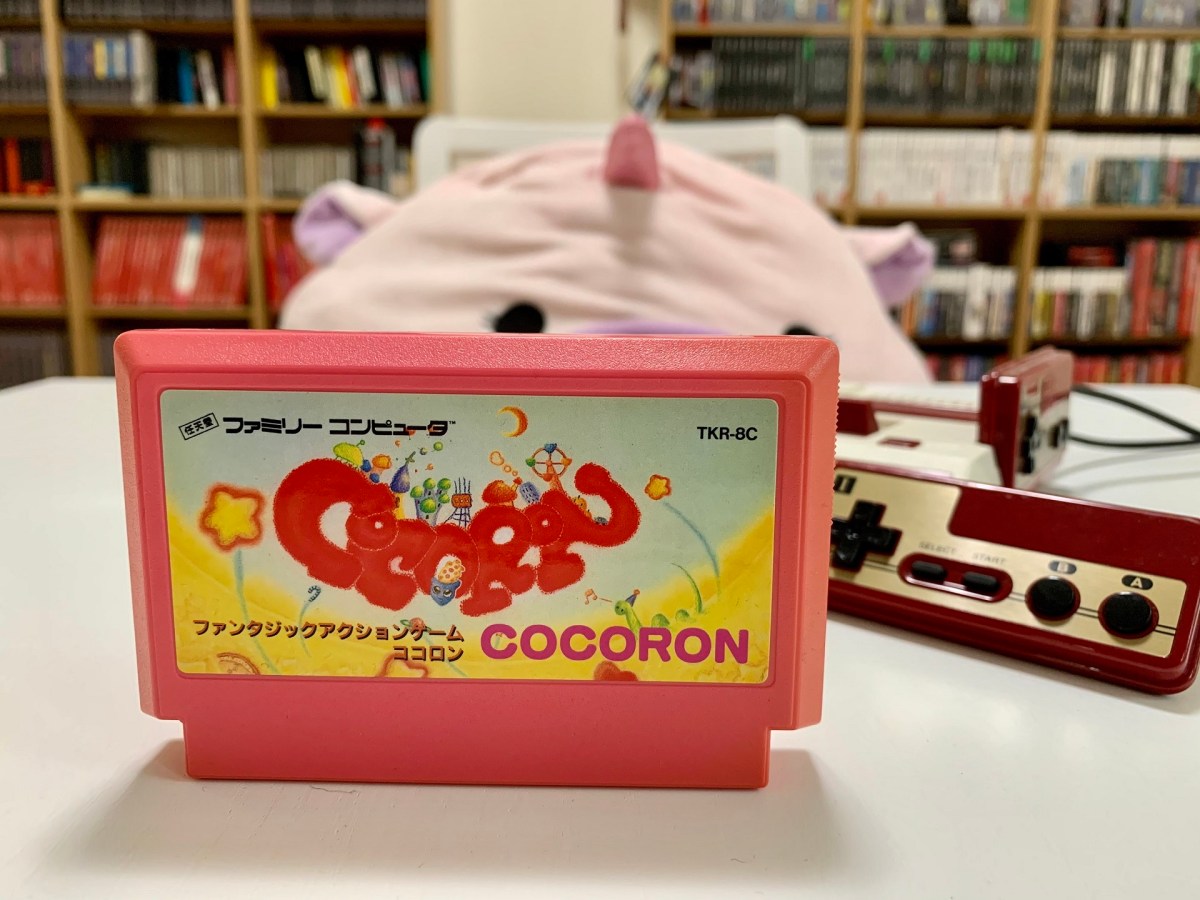Break out the rohos for this Famicom Friday
One of the holy grails of the NES library is a game called Little Samson. While it’s a pretty solid game, it commands the highest value for an official NES game (yes, Stadium Events is more expensive, but it’s just a different title screen for World Class Track Meet). It was developed by Takeru, and if you’re unfamiliar with the name, that’s because North America only got one of their games, and it was Little Samson. So, that’s not very helpful.
They made one other game for the Famicom, and that was Cocoron. Let me show you its pedigree: Cocoron was designed by Akira Kitamura. Have you heard of him? He created Mega Man. He was the designer of Mega Man and Mega Man 2. Excited yet? Maybe cool those jets.

Mega Man, this is not, but it certainly tries. Cocoron is definitely an action platformer, but its focus is more on fusion. You start off by creating a character by choosing a head, body, and projectile. Depending on what you put together, you’ll get something with completely different firepower, jump height, and speed. While you start off with this character, as you progress, you start building a stable of freakish monstrosities to choose from.
But that’s not all! The level progression, like Mega Man, has you simply pick where you want to go next. However, the stage you’re presented with is a combination of the one you’re currently at and the one you’ve chosen with a boss at the end of it. Stages change depending on what sequence you pick, so, technically, there are a lot of unique places to visit.

Unfortunately, that’s the main problem you’ll bump into. Because the stages are all stitched together, their design is positively posterior. Each segment has its own obstacles, but none are as interesting as something you’d find in, say, Mega Man. Even in different environments, some of the sections seem a little too similar.
There’s a big finale after you’ve defeated the main bosses and rescued the princess, which, once again, is just like Mega Man. The big difference is that you’re tasked with reclaiming all your constructed heroes who have been captured. It hits when it’s needed and is a nice change of pace.
There are also a lot of options for your character, but certain ones like the boat body don’t make a whole lot of sense to me. Yeah, it can make certain segments of a level easier, but it seems more practical to create a general use character that works for most situations. You can have a stockpile of characters, but they each level up individually, so it makes more sense to use only one or two. You can only choose a new one at the beginning of each level, so it’s not like you can just swap to the most optimal one for each obstacle.

It’s kind of unfortunate because the platforming is as tight as you’d expect from the creator of Mega Man. The graphics also show a lot of love and detail. Characters who stand on a slope, for example, will change posture to fit the slope. It kind of makes Cocoron feel extremely tech first; one of those games that is trying to see how much it could squeeze from Nintendo’s 8-bit powerhouse but sort of forgets to place its chips where it counts.
That’s not to say that Cocoron isn’t fun; it’s just a whole heap of wasted potential. The variety that is such a focus is wasted because the design doesn’t necessitate its use enough. The result is a game that doesn’t even provide a convincing argument against Mega Man’s imitators like Bucky O’Hare.

Cocoron is still worth checking out, but more as a curio or tech demo. You won’t find anything quite like it on the Famicom. It feels more like a “can we do it” sort of game rather than a “will it be fun” approach.
There’s a decent amount of Japanese text, but you can mostly ignore it. It’s most helpful to know the language when building your character since it’s the only way to know what projectile you’re saddling them with. However, for those English monolinguists among us, there is a fan translation available.
Speaking of the language, there’s one strange quirk with Cocoron: I could never figure out how to add a tenten or maru mark when entering a name. To explain briefly, these marks change the consonant sound in Japanese syllables. Without them, I couldn’t spell, for example, robo. It can only be spelled as roho. It’s a strange oversight considering the dialogue has these marks. Maybe I’m just missing something, but I don’t know where you hide a function on a Famicom controller. The second player controller’s microphone?
Check out previous Famicom Fridays right here.






Published: Apr 8, 2022 03:00 pm